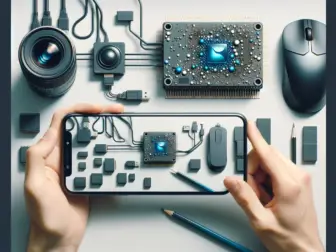Tag - Smart Home Technology
Revolutionizing Your Home with Smart Home Technology
Revolutionizing Your Home with Smart Home Technology
Smart home technology is revolutionizing the way we live by providing convenience, comfort, and security like never before. From smart thermostats that learn your temperature preferences to voice-activated virtual assistants that can control your home’s lighting and appliances, the possibilities are endless. These innovative devices are not only making our lives easier but also more energy-efficient and cost-effective.
One of the key benefits of smart home technology is the ability to control your home remotely. With the use of a smartphone or tablet, you can adjust the temperature, turn on lights, or even lock doors from anywhere in the world. This gives homeowners peace of mind and flexibility, especially when they are away from home for an extended period.
Another advantage of smart home technology is its ability to increase energy efficiency. Smart thermostats can learn your heating and cooling patterns and adjust the temperature accordingly, saving you money on your energy bills. Additionally, smart lighting systems can be programmed to turn off when you leave a room, reducing unnecessary energy consumption.
Security is also a major concern for homeowners, and smart home technology offers a range of solutions to keep your home safe. Smart cameras can provide real-time surveillance of your property, and smart doorbells can alert you when someone is at your front door, even when you are not home. Some systems can even alert authorities in case of a break-in, adding an extra layer of protection to your home.
Furthermore, smart home technology can also improve the overall comfort of your home. Smart blinds can be programmed to open and close at specific times of the day, and smart speakers can play your favorite music throughout your home. These small conveniences can make a big difference in your daily life, creating a more enjoyable living environment.
As smart home technology continues to evolve, the possibilities are endless. With the integration of artificial intelligence and machine learning, smart devices can become even more intuitive and personalized to your needs. Imagine a home that anticipates your preferences and adjusts accordingly, making your life easier and more efficient.
In conclusion, smart home technology is transforming the way we live by providing convenience, comfort, and security. With the ability to control your home remotely, increase energy efficiency, enhance security, and improve overall comfort, smart devices are becoming an essential part of modern living. Embrace the future of technology and revolutionize your home with smart home technology.


